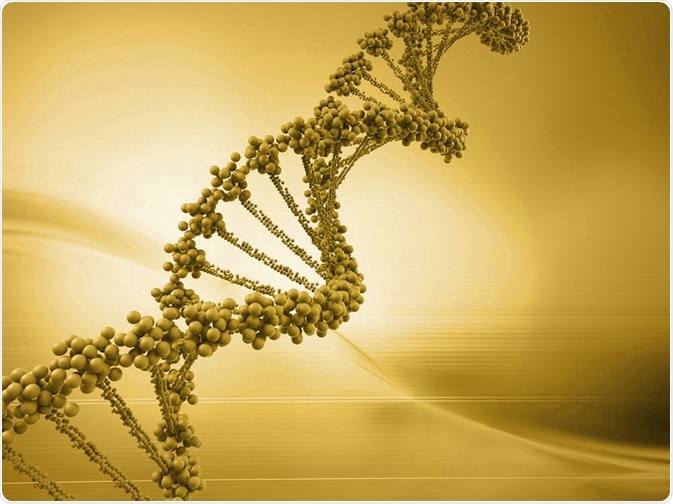Many techniques in molecular biology are based on deleting or altering the function of genes. Deletion or inactivation of genes is known as knockout or knockdown.
 Credit: Hamdee/Shutterstock.com
Credit: Hamdee/Shutterstock.com
Genes are the code by which all of the functions of an organism are carried out. In most organisms, genes are encoded in DNA, DNA is transcribed into RNA, and RNA is translated into proteins, which become the building blocks and catalysts for the whole organism.
The terms gene knockdown and gene knockout are often used interchangeably. However, there are some distinctions that may be made.
Gene knockout
Gene knockout is the total removal or permanent deactivation of a gene through genetic engineering. The earliest gene knockout experiments were done in Escherichia coli.
The method has been refined and developed for many other organisms since then, particularly mice. Knockout mice are commonly used in research to study the effects of genes that may have significance in human health.
A recent example of a study using knockout mice is an investigation of the roles of Xirp proteins in Sudden Unexplained Nocturnal Death Syndrome (SUNDS) and Brugada Syndrome in the Chinese Han Population by Cheng, et al.
The researchers screened Xirp genes in people with the two syndromes, and identified two gene variants that may be pathogenic. Using Xirp2 knockout mice, they learned that mouse hearts without Xirp2 exhibited many abnormalities.
This study identified variants of Xirp that are likely to play a role in SUNDS and Brugada syndrome, and reveal the role of Xirp2 in cardiac function.
Gene knockdown
Studies where genes are deactivated or suppressed rather than deleted outright are sometimes referred to as gene knockdown studies, rather than knockout studies. This usually implies that the gene was originally present or functional.
To knockdown a gene product transiently, an oligonucleotide may be used to bind to the gene coding for it, or to its mRNA, leading to a temporary change in expression.
Gene silencing, gene editing, and conditional gene knockout are forms of gene knockdown experiments. Gene knockdown can be complete or partial, offering flexibility in studying the gene’s role in the biology of the organism.
In gene silencing, or RNA interference (RNAi), small interfering RNA (siRNA) or short hairpin RNA (shRNA) are used to inactivate messenger RNA for a specific gene. That effectively suppresses expression of the gene.
This method has been used to target oncogenes like Bcl-2 and p53, as well as genes implicated in neurological disease, hereditary disorders, and viral infections.
Conditional Knockout
Conditional knockout is an approach to knockdown studies in genes that would be lethal if they were completely knocked out.
The original conditional knockout method made use of a site-specific recombinase called Cre that recombines short target sequences known as LoxP. Other recombinases have since been developed and used for conditional knockout studies.
Gene editing systems like zinc finger nucleases (ZFNs), transcription activator-like effector nucleases (TALENs), and clustered regularly interspaced short palindromic repeat (CRISPR), are an emerging alternative to site-specific recombinases.
These enzymes have begun to replace many foundational methods in molecular biology such as cloning. Conditional gene knockout is another example where they have some advantages over the original tools.
Sources:
- New method for generating deletions and gene replacements in Escherichia coli
- Genes and your health
- RNA interference: learning gene knock-down from cell physiology
- Gene knockdown in the mouse through RNAi
Further Reading
- All Gene Knockout Content
- Knockout Mouse Project
- Gene Knockout Method
- Electroporation and the Production of Knockout Mice
- Deletion Mapping Explained
Last Updated: Feb 26, 2019

Written by
Dr. Catherine Shaffer
Catherine Shaffer is a freelance science and health writer from Michigan. She has written for a wide variety of trade and consumer publications on life sciences topics, particularly in the area of drug discovery and development. She holds a Ph.D. in Biological Chemistry and began her career as a laboratory researcher before transitioning to science writing. She also writes and publishes fiction, and in her free time enjoys yoga, biking, and taking care of her pets.
Source: Read Full Article
